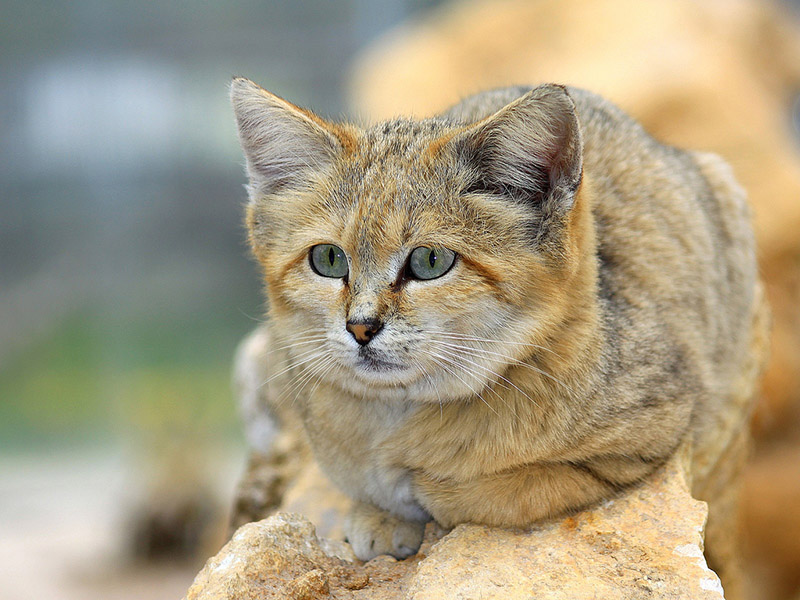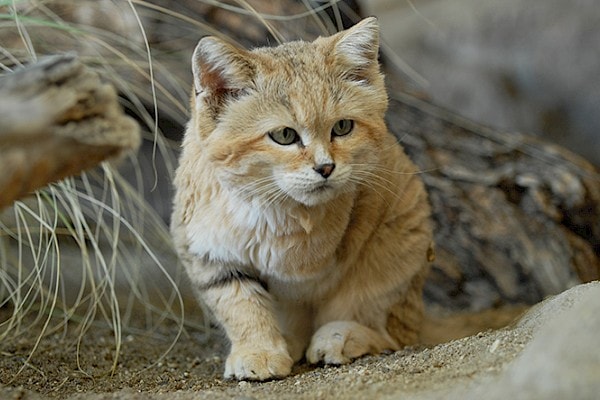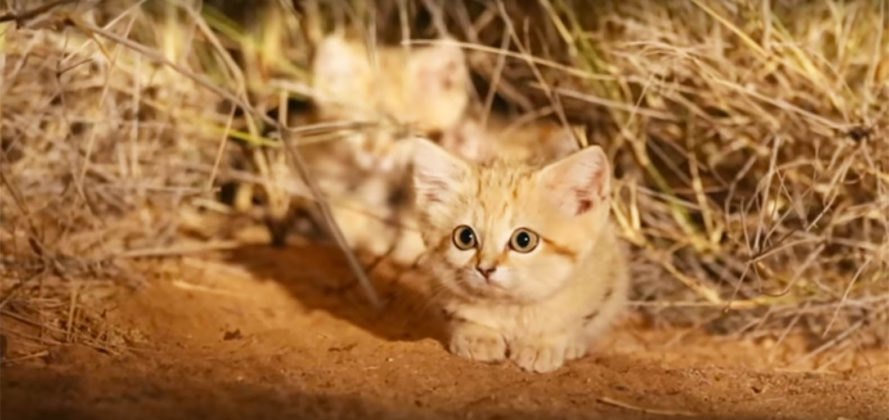Let’s face it – sand cats or sand dune cats are some of the most adorable creatures to walk the face of the earth.
If you are a cat lover, you will be immediately smitten by the sight of one. Their gray-brown coats with different patterns across the body make them appear like orange tabbies.
They are slightly pale on the belly and darker on the back areas. The contrast is adorable.
The beauty is added by the bold red streaks that run from the corner of their eyes down to their cheeks.
Everything about the physique of these wild cats just catches the attention of any cat enthusiast.
As a wild feline, the sand cat is a creature of the desert. He is essentially the “king” of the desert as he enjoys living in arid habitats.
Although he looks like a housecat, he is not great at being a pet. However, this doesn’t stop ambitious cat lovers from buying one for themselves.
If you are one of them, you must wonder how much a sand cat is worth.
We have broken it down for you below.
Purchase Price

Right off the bat, you need to know that owning a sand cat (or any feral cat for that matter), is illegal in most US states.
Only 6 out of the 50 states have given cat owners the chance to have a wild cat for a pet. These include Delaware, Alabama, North Carolina, Wisconsin, Nevada, and Oklahoma.
This makes it difficult to get a genuine seller of a good quality sand cat kitten. Well, the majority of the puppies are sold in black markets.
The few good ones sell their animals for anywhere between $7000 and $10,000 per sand cat. This is a good coin to spend on one cat.
A housecat costs about $750 according to the ASPCA. Of course, other breeds will cost so much more than this but the prices do not come near the $10,000 mark.
So, yes these wild cats are not the cheapest animals around.
Part of the reason they are expensive is also that they are rare. In 2002, the International Union for Conservation of Nature (IUCN) termed the sand cats as “near threatened”.
Thankfully, in 2016, their status changed to “least concern”. Still, in other parts of the world, the species is endangered to the point where zoos are capturing them for breeding.
Capturing a sand cat is also pretty difficult. A breeder would have to go to the wild and get two fertile animals of the opposite gender and breed them hoping to get offspring.
Getting two sand cats is in itself a tall order as these felines prefer being solitary.
To make things difficult, raising the kittens is a risky affair. Most of them prefer certain climates and may not make it in humid areas.
Additionally, there’s very little medical information about the cats. All these factors push the price of sand cats up the roof.
Other Costs

As you might already know, the price of a cat is only part of the equation.
After bringing one home, expect to splurge your cash on various other costs such as the following:
1. Food
Like any other feline, the sand cat is mostly carnivorous. That means a bulk of his diet is made of meat.
You’d have to feed him raw meat or a specially-prepared diet designed for wild cats.
Preparing the cat’s food by yourself requires skill and caution lest you poison the poor animal.
The bottom line is that feeding a sand cat will be more expensive than your typical kitty.
2. Housing
This is another thing that will cost an arm and a leg.
As a wild cat, the sand cat is not an indoor pet. He needs plenty of open space.
That means building something that resembles a desert at home. Expect to splurge to get the perfect housing for your kitty.
3. Medical Costs
Sand cats are susceptible to certain medical conditions just like other cats.
Most vets aren’t versed in treating these cats. The few available ones are expensive meaning they don’t come cheap.
4. Training
Taming a wild cat needs expert training and socialization.
You would need the services of a good cat behaviorist and trainer – all these cost money.
Parting Thoughts
Sand cats are cute, rare, hard to catch, illegal in most states, and difficult to care for.
All these affect the purchase and maintenance price of these felines in one way or another.
If you plan on getting one, put aside a huge sum of cash. The figure could go as high as tens of thousands of dollars or more.
Don’t say we didn’t warn you!

Hi! I am Eleanor Price. I started this website after my cat, Louie, almost died from a case of botulism (a type of food poisoning often caused by bacteria that grow on food items). Turned out that my cat’s diet was the problem. I have made it my duty to provide the best information and recommendations about everything cat lovers need to know about their felines’ health and wellbeing. My goal is to find the most informative content on anything feline-related and share it with fellow hardworking kitty lovers.

